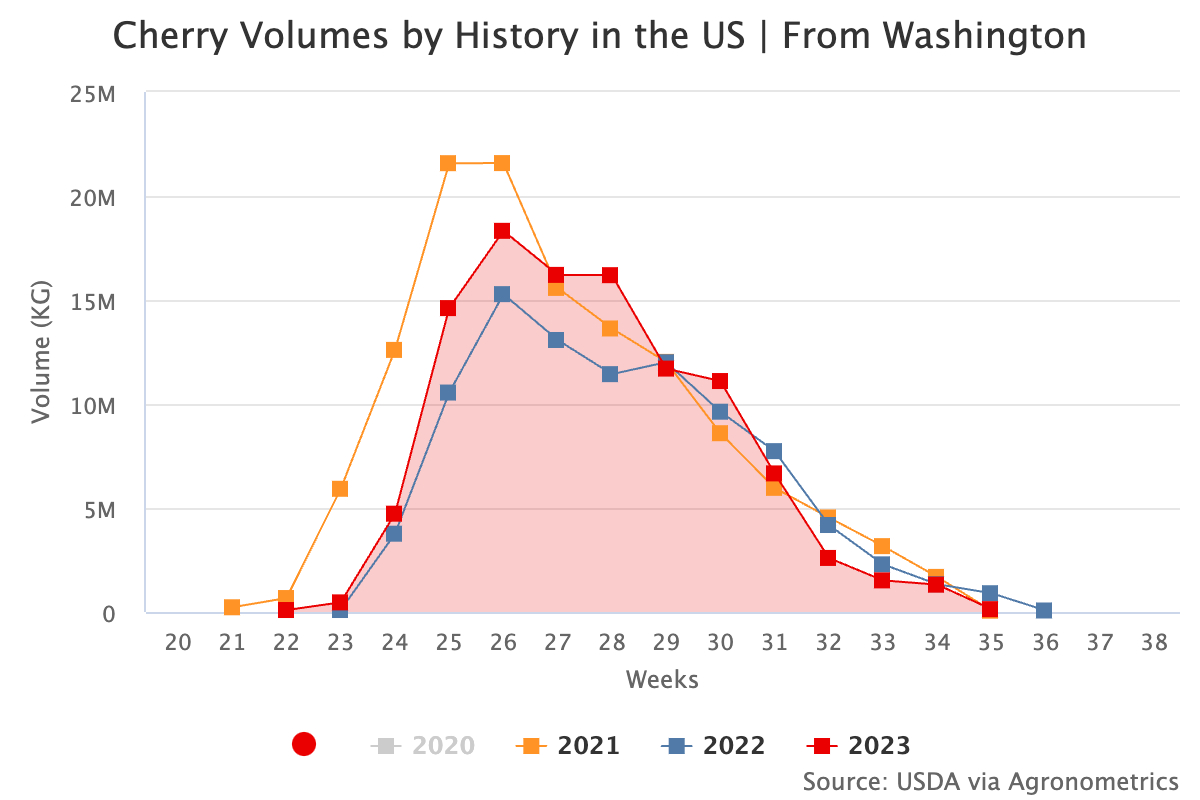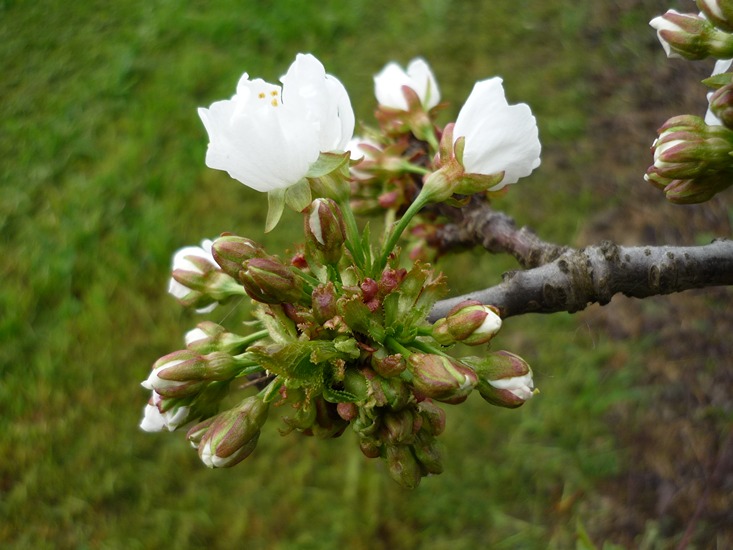The irregular weather patterns of last year caused a surplus of cherries along the West Coast, with California and Washington both experiencing a bountiful harvest simultaneously.
The market struggled to absorb last season's surplus, resulting in unharvested fruit and falling prices. Jon DeVaney, president of the Washington State Tree Fruit Association, noted that Pacific Northwest growers faced significant economic losses, leaving up to 35% of the crop unharvested.
Fortunately, this season's optimal spring weather conditions have provided relief to growers, with the Northwest Cherry Growers (NWCG) estimating the 2024 crop at 20.9 million boxes, a 12% increase over the previous year. The expected temperature rise is believed to enhance cherry quality, aiding sugar accumulation and fruit cell growth.
This year's harvest is expected to start earlier than usual, with full bloom occurring nearly two weeks ahead of the 2023 schedule. However, there is still concern that January frosts might affect late-ripening varieties, potentially shortening the season.

Despite these challenges, the full-bloom cherry harvests along the Pacific Coast promise significant opportunities for both consumers and retailers.
Oregon's sweet cherry industry had an exceptional year in 2020, producing nearly $134 million worth of cherries. The 2021 harvest experienced a 50% reduction in value compared to 2020, while the 2022 harvest saw only a 5% increase over 2021, according to USDA data.
In response to the losses suffered by cherry growers last season, nine Oregon counties will be eligible to apply for federal loans and aid from the United States Department of Agriculture.
In March, the United States Department of Agriculture approved Oregon's request for a natural disaster designation after the state's cherry growers lost a significant portion of their crop. The designation referred to two weather events in July 2023 that caused the crop loss: excessive rains in Hood River County and drought and heat in Wasco County.

Under this designation, growers in the primarily affected counties and adjacent areas can apply for emergency loans from the USDA Farm Service Agency until October this year. In November, Washington requested a secret disaster designation for the 2023 cherry crop, and in February, a bipartisan group of state senators and members of Congress urged the USDA to approve it.
The forecasts for the cherry season in British Columbia present significant challenges due to two cold snaps earlier in the year. Although some trees managed to withstand the initial January frost, the subsequent April frost proved damaging. Gagan Grewal of HG Produce in Abbotsford, B.C., notes that the impact was severe, with minimal fruit, estimated at around 10-15% of production, visible in the Okanagan Valley.
Due to the low production in B.C., some growers have decided that it is not even worth harvesting what remains on the trees this season.
Source: Agronometrics
Images: Agronometrics
Cherry Times - All Rights Reserved














